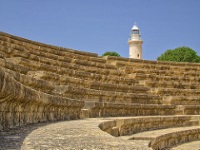
Near the modern Paphos Lighthouse is the Cypriot Acropolis, a complex of ancient buildings which includes a 2nd century Roman odeon restored and now used for summer orchestral and stage performances. South of the odeon are the remnants of the Roman Temple of Asclepius, the god of medicine, and north of the lighthouse are the ruins of the ancient town walls. One of Cyprus's world-renowned ancient treasures is the stunning set of mosaics of the acropolis near the harbour. These incredibly well-preserved artworks often top the list of Cyprus attractions and have been delighting visitors for decades.
Address : Kato Paphos
Website : www.cyprusisland.net/attractions/paphos-acropolis-odeon
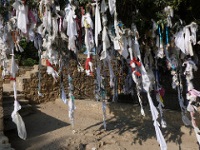
A large pistachio tree marks the entrance to the underground catacombs of Agia Solomoni in Kato Paphos. A strange sight, it's usually festooned with cloth tied onto it by the faithful as offerings in the hope the sacred tree will cure various ailments. The catacombs were carved into Fabrica Hill in the 4th century BC, below the ancient Roman wall. Underground chapels feature frescoes and graffiti left by 13th century crusaders, and there are numerous legends and stories attached to the patron saint Ayia Solomoni. There's little to no guidance or information on offer at the site so it is best to do some research before you go to understand what you are looking at.
Address : Agio Pavlou Street
Website : www.cyprusisland.net/churches/agia-solomoni-church-and-catacombs
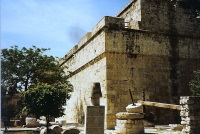
Built in the 14th century, Limassol Castle stands guard over the old harbour on the site of an earlier Byzantine castle. Today it houses the Cyprus Medieval Museum with a host of fascinating exhibits dating back to the Early Common Era (384-650). The museum's collection boasts an array of weaponry and armour, including swords, helmets, and the 500 year old canons which still adorn the battlements. The castle is most renowned for being the place where crusader King Richard the Lionheart married Berengaria of Navarre and crowned her Queen of England in 1191.
Address : Limassol Castle, Richard and Berengaria Street
Website : www.visitcyprus.com/index.php/en/discovercyprus/culture-religion/museums-galleries/item/135-museums-galleries
Opening times : Monday to Saturday, 9am to 5pm. Sunday, 10am to 1pm.
Admission : €4.50
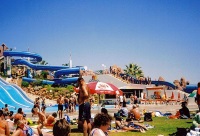
If you are visiting Limassol and need a break from sightseeing and the Cyprus heat, you should splash in the cool waters and enjoy the fun slides at Water Mania. The water park is suitable for travellers of all ages and is a great attraction for the whole family. If you are travelling in Cyprus with kids, then this is the ideal way to let them blow off some steam. The park has a somewhat cheesy Polynesian theme but it provides good wholesome fun and a safe environment. Don't forget the sunblock.
Address : Fasouri area (15 mins outside Limassol)
Website : www.fasouri-watermania.com
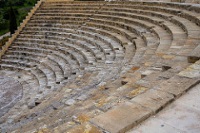
Believed to have been founded by the Argives, the ancient city of Kourion is one of the most beautifully-positioned ancient sites in Cyprus. It has passed through different phases, including the Hellenistic, Christian, and Roman periods, the agora(market place), Christian Basilica, and large public bath bearing testament to this city's impressive list of inhabitants. The restored Greco-Roman theatre hosts open air performances and is one of the venues for the International Festival of Ancient Greek Drama. Attractions around the complex include the House of the Gladiators, the Roman baths, the House of Achilles, and the Temple of Apollo.
Address : Located nine miles (14 km) west of Limassol
Website : www.visitcyprus.com/index.php/en/discovercyprus/rural/sites-monuments/item/2402-sites-monuments
Opening times : September 16 to April 15, daily from 8.30am to 5pm. April 16 to September 15, daily from 8.30am to 7.30pm.
Admission : €4.50
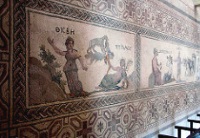
The Mosaics of Paphos are a series of striking floors in a number of ancient Roman villas, dating from the 3rd to the 5th centuries. The sites are still being excavated on around 300 metres from the Paphos Harbour. The mosaics featuring mythological scenes are visible in the Houses of Dionysos, Orpheus, Aion, and the Theseus. There are also stunning mosaics to be seen in the House of Four Seasons. All the mosaics were made from small cubes of marble and stone, called tesserae, with glass paste added to widen the range of colour.
Address : Kyriakou Nikolaou Street
Website : www.visitcyprus.com/index.php/en/discovercyprus/culture-religion/sites-monuments/item/246-pafos-paphos-mosaics
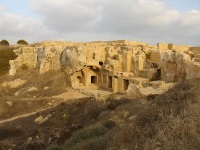
There is no royalty buried in the Tombs of the Kings, a grand mausoleum found one mile (2km) northwest of Paphos Harbour towards Coral Bay. Rather, it's the final resting place of about 100 Ptolemaic aristocrats who lived and died in the city between 3 BC and 3 AD. The tombs are carved into the solid rock of the cliff above the sea and are beautifully situated, with some featuring Doric pillars and frescoed walls. Archaeological excavations are ongoing at the site, which also features a church known as Paleoekklisia, sporting traces of Byzantine frescoes. The Tombs of the Kings usually feature very high in tourist reviews of Paphos and are thrilling to discover.
Address : 1 mile (2 km) north-west of Paphos harbour towards Coral Bay, Kato Paphos
Website : www.visitcyprus.com/index.php/en/discovercyprus/culture-religion/sites-monuments/item/253-tombs-of-the-kings

01474 814411

Travel Guide powered by Word Travels, copyright © 2023 Globe Media Ltd. By its very nature information in this travel guide is subject to change at short notice and travellers are urged to verify information on which they're relying with the relevant authorities. Neither Globe Media Ltd nor Travel Vogue can accept any responsibility for any loss or inconvenience to any person as a result of information contained above.